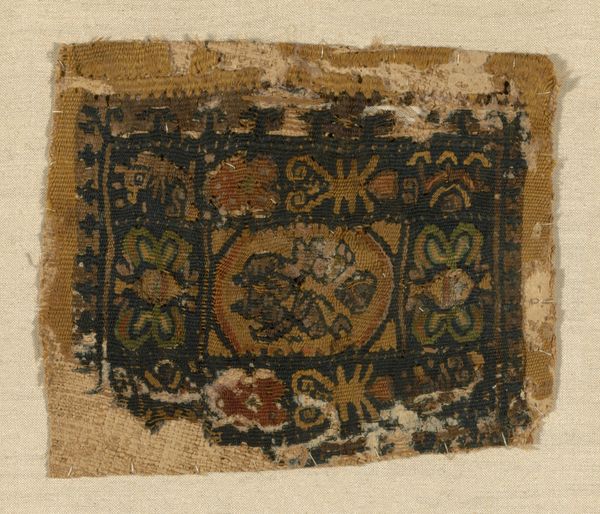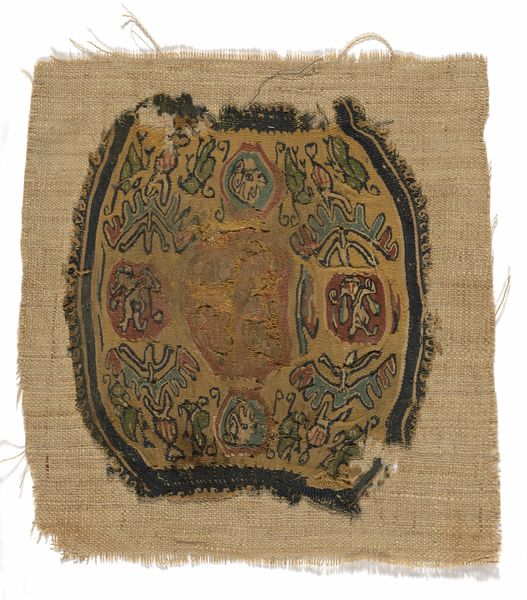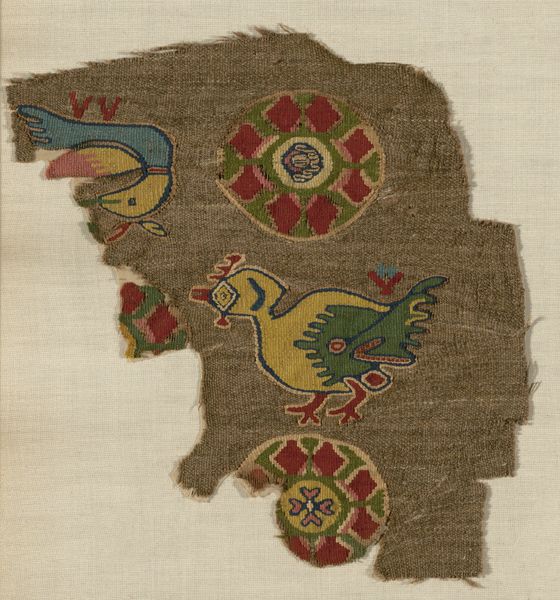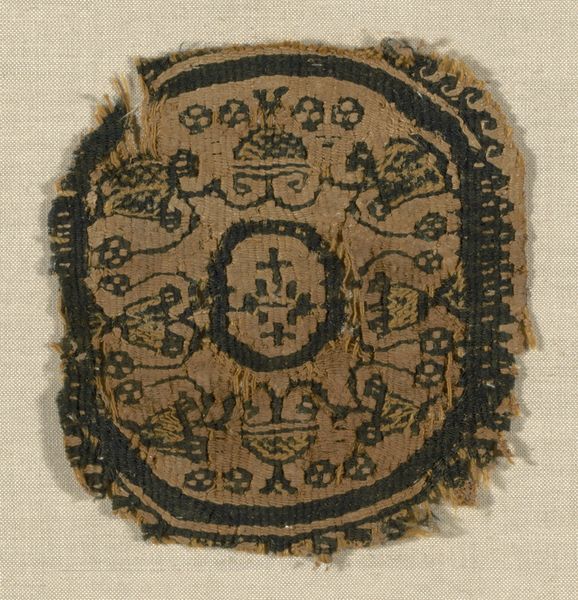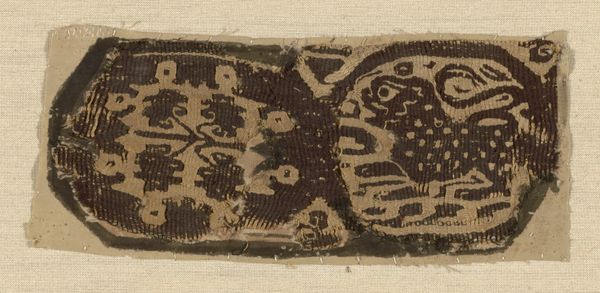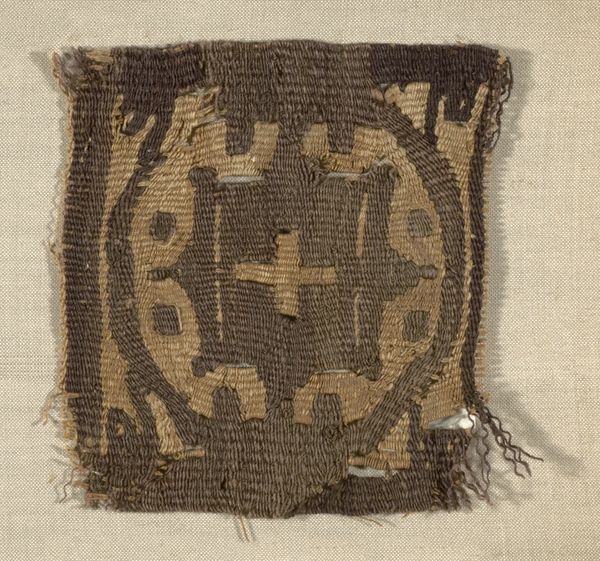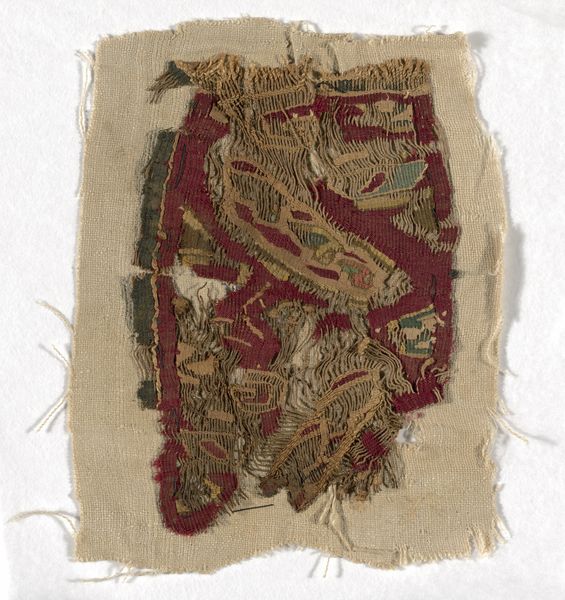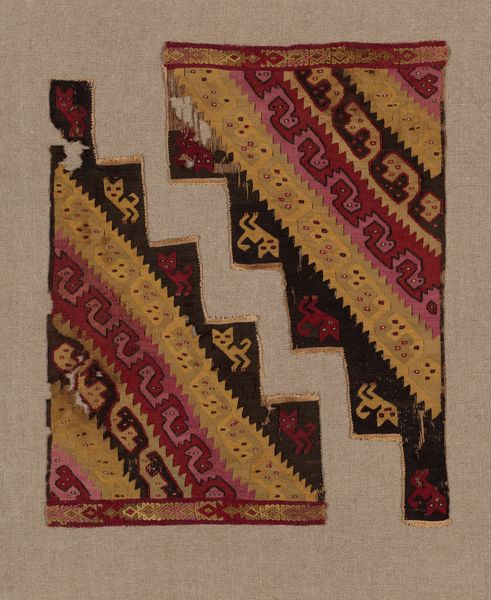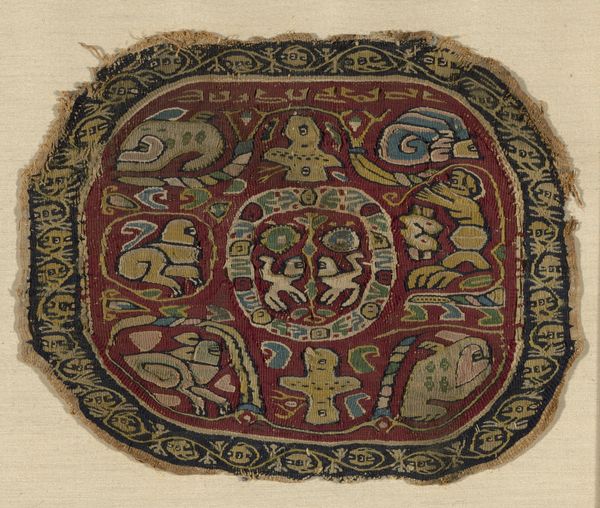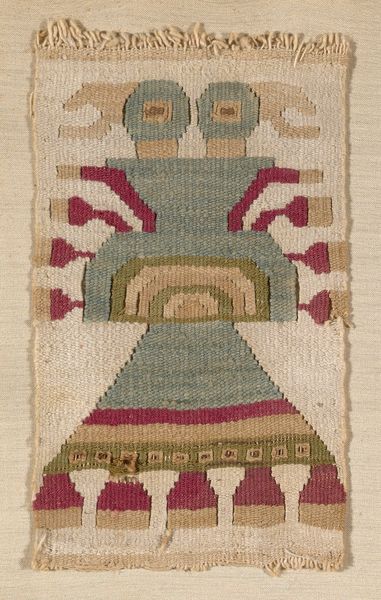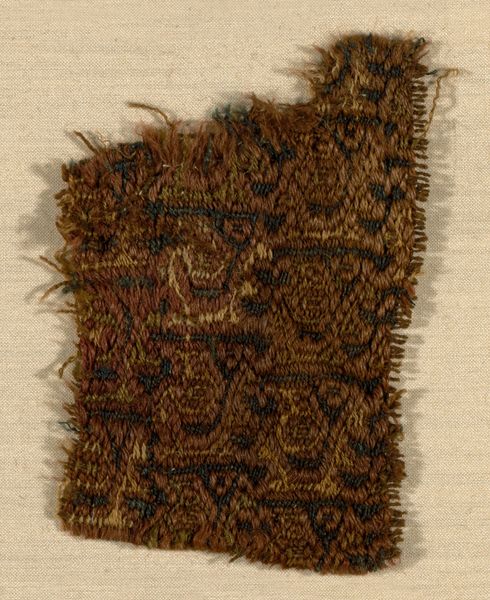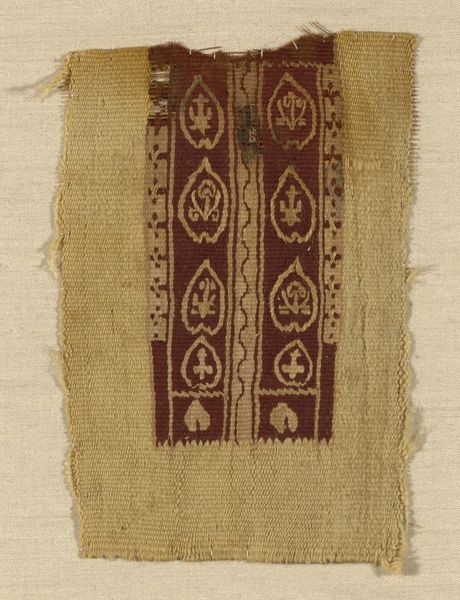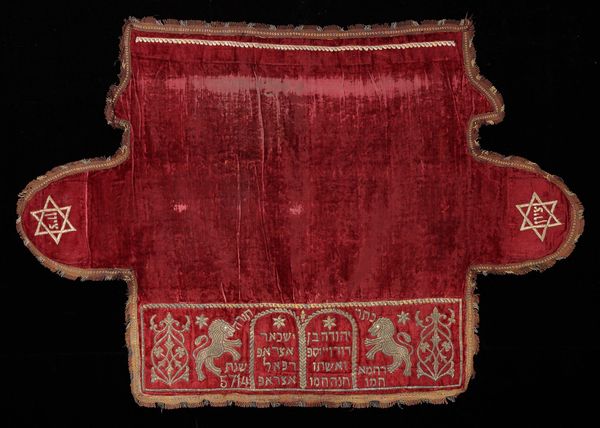
Fragment Roman period (30 B.C.– 641 A.D.)/Arab period (641–969), 7th/8th century
0:00
0:00
weaving, textile
#
weaving
#
textile
#
figuration
#
form
#
ancient-mediterranean
#
line
#
islamic-art
Dimensions: 7.6 × 7.6 cm (3 × 3 in.)
Copyright: Public Domain
Curator: What immediately strikes me is the symmetrical design; two birds facing each other create an almost heraldic image, yet the worn fabric lends it a very humble, human feel. Editor: Exactly. The Art Institute of Chicago presents us with this Coptic textile, titled “Fragment.” Created sometime in the 7th or 8th century, during the Roman and Arab periods. The artist employed weaving to render these fascinating motifs, where you can observe influences from both worlds coming together. Curator: So, weaving as a crucial technique for representing a moment of cultural shift? This little piece seems loaded with meaning, doesn't it? I'm drawn to how this figuration plays with the form, becoming abstracted, losing some fidelity in order to suggest Islamic Art style. The question becomes, what was it meant to symbolize or enact? Editor: Its function is uncertain, but textiles held significant socio-political and religious roles during this period. In Egypt, specifically, Coptic textiles acted as status symbols. Think about tunics or wall hangings - these were canvases of social statements. They could express the wealth, status, religious beliefs, and political affiliation of those who possessed them. Curator: I wonder what role the avian figures play. Given that birds frequently appeared in both pagan and Christian iconography, were they viewed here as spiritual guides? Or symbols of paradise? Is there even the potential to interpret them with connection to ancient deities with avian qualities? The colors are somewhat faded, but they are still very visually compelling. Editor: Indeed. It seems plausible that we should study this item in conjunction with contemporary social structures to explore issues of trade, religious belief, and perhaps even acts of appropriation or resistance. Given that it's a fragment, one ponders where the entire textile piece originated. Who owned it and under what conditions? And that unavoidable question that emerges when art becomes history – what was preserved? What stories haven’t survived time? Curator: That's it exactly. Thinking about the absent narratives pushes me to remember how intertwined visual expression and cultural memory really are, how objects hold a piece of the story even in their brokenness. Editor: Yes, and with it, weaving through the historical and contemporary implications within a humble, ancient weaving reveals fascinating and rich intersections in our world today.
Comments
No comments
Be the first to comment and join the conversation on the ultimate creative platform.
